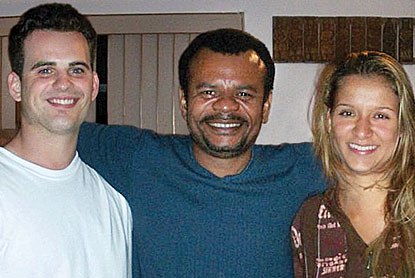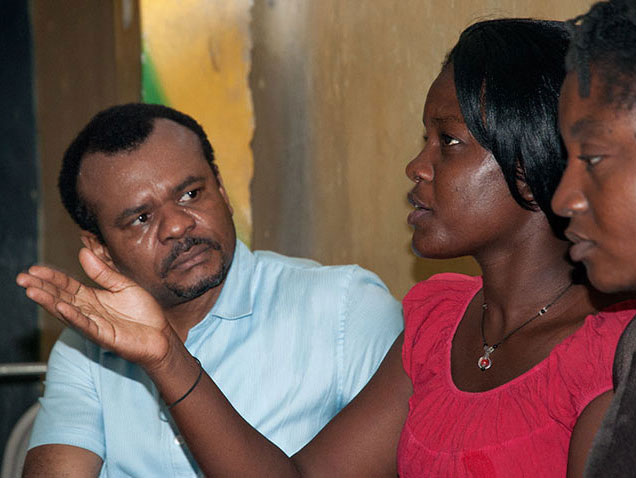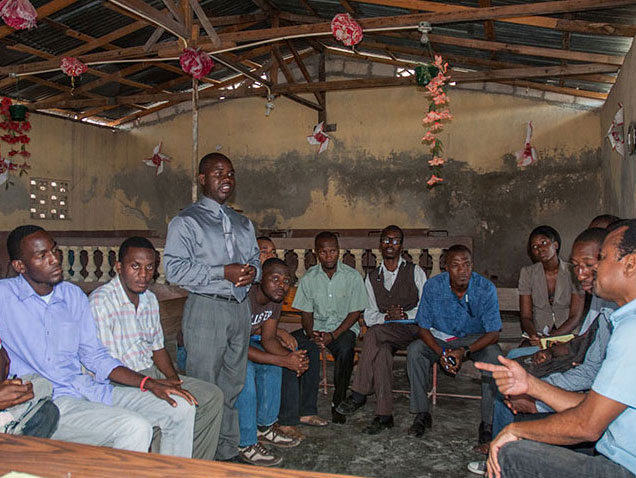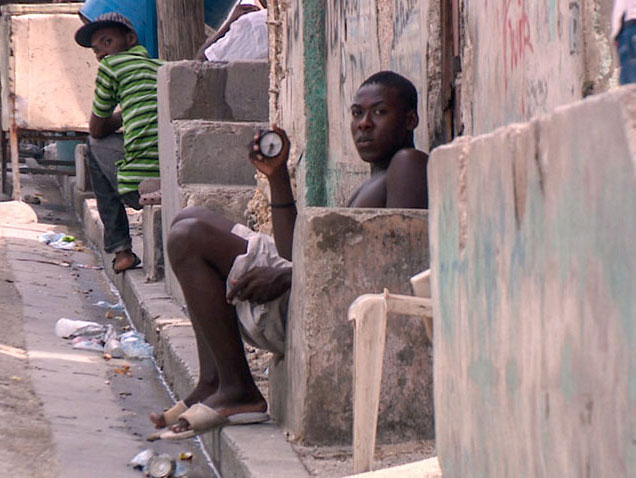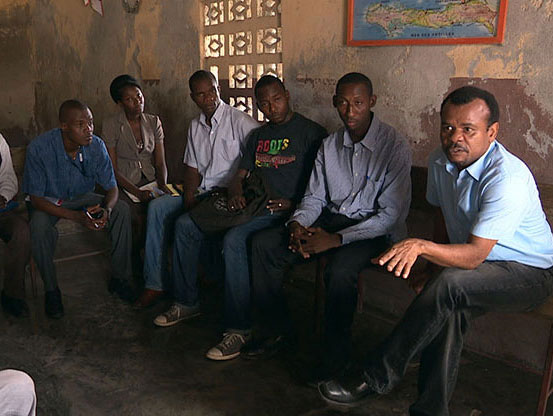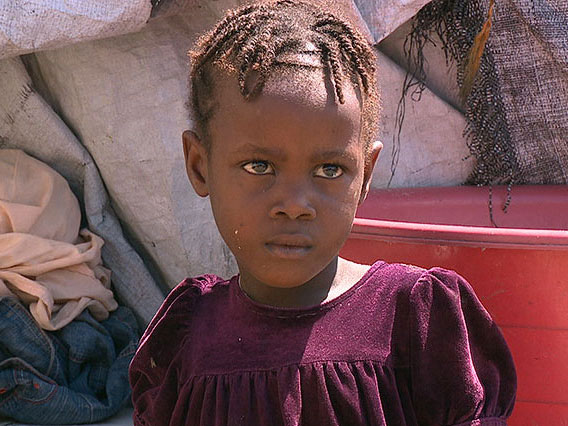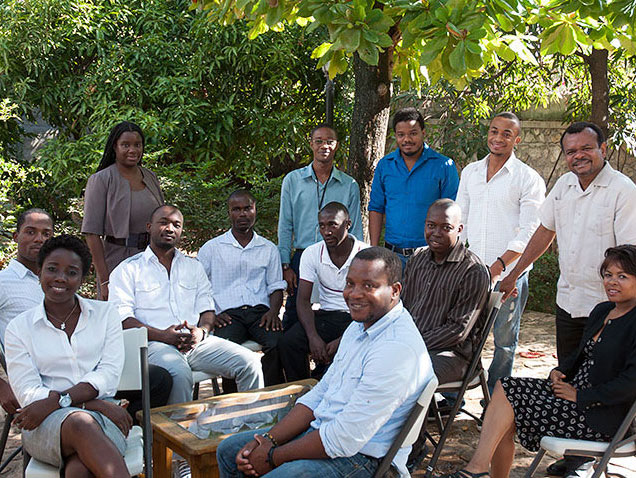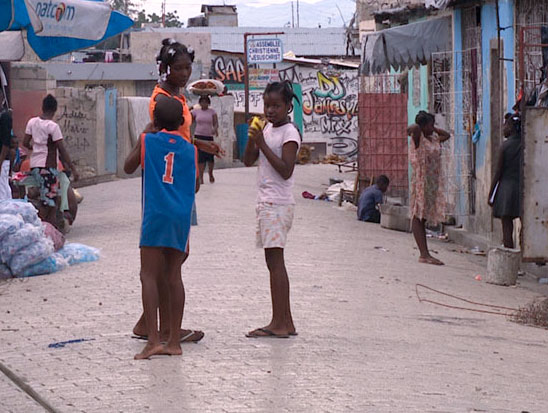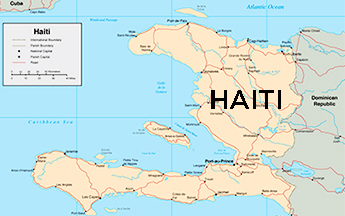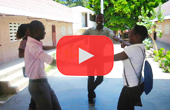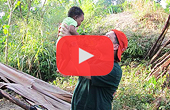The foundation to build a successful future in Haiti will require leadership, education, and research, says UM anthropologist Louis Herns Marcelin.
On this hot, sunny September afternoon, there is no hint of the rains that flood the homes on the southern edge of Cité Soleil, one of the largest and most dangerous slums in the world. But University of Miami Associate Professor Louis Herns Marcelin is familiar with the drainage problem a woman describes as she shows him the muddy, trash-choked trench behind her shack that is supposed to divert the water that collects on the street.
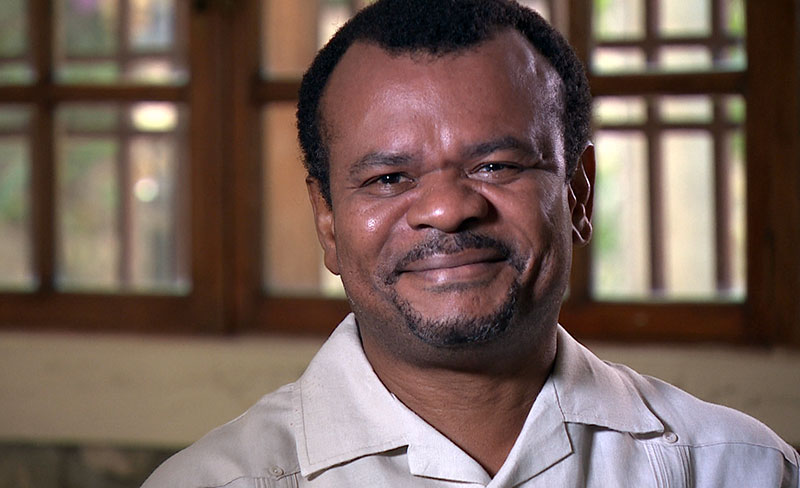
Louis Herns Marcelin
He knows all too well that the flooding is the result of another misguided effort to help some of the City of the Sun’s more than 300,000 residents. Years ago, foreign aid contractors replaced the dirt road with brick pavers. They surely meant to improve the lives of the people who live among the gangs fighting for control of the sprawling community in the shadow of the Haitian capital’s petroleum depot. But by elevating the street, they redirected the rain right into the tiny, tin-roofed hovels that line it.
“This is another of those quick-fix solutions that complicates life,” says Marcelin, an associate professor of anthropology who in 2007 founded Haiti’s Interuniversity Institute for Research and Development, or INURED. “People have good hearts but quick fixes do not build the capacity to help Haitians help themselves, and that is the solution for Haiti.”
To Marcelin’s dismay and that of his collaborators, unstudied, quick fixes remain the hallmark of aid to Haiti, a frustrating fact that INURED is working to change by grooming new leaders who can research pressing social issues and guide public policy.
Before Haiti’s devastating earthquake five years ago, the institute was succeeding in its mission of bringing a new generation of leaders from Cité Soleil’s divided neighborhoods together to examine community problems and propose fact-based solutions to Haiti’s decision-makers. The initial successes of the Cité Soleil Community Forum inspired hope for a better future: Thanks to the power of hard data and collective voices, police who had abandoned Cité Soleil to the warring gangs returned to two new police precincts. And the American Highway, the main artery circling the shantytown, finally lived up to its name and was paved.
“Before there was insecurity everywhere,” says Nereus Joliette, a member of a women’s group who gathered last fall for an impromptu meeting at the Haitian Foundation for the Family of the Future in Cité Soleil’s Avenue Soleil neighborhood. “There were no police. But now the police have returned. It shows what community involvement can do. We can change minds if we sit together.”
Changing minds—and outlooks—through civic engagement remains the goal of members of Cité Soleil’s Youth to Youth group, some of whom teamed up years ago with students from the University of Miami and other universities to conduct an unprecedented survey of living conditions in the shantytown. That survey, which showed many people live without running water, electricity, and toilets, helped give rise to the community forum.
It’s much more than just giving a hand to Haiti. It is about investing in Haitians and about Haitians believing in themselves.
“It helped young people who didn’t see a future start to appreciate their own abilities,” Marcelin says. “They thought, ‘If students from UM and elsewhere can come here and enlist me I have something to offer.’ Instead of manifesting their discontent in violence they learned they could re-channel it into action and become a force for change.”
“They stimulated us to look at our community and change the mentality,” agrees Odlin Jean, who is now a law student and active youth leader. “Our dream is to have our community see itself differently—and it starts with individuals seeing they can have a better future, a better tomorrow.”
But that dream would be disrupted by the flood of aid and short-term projects that followed the deadly earthquake that decimated the Haitian capital on the afternoon of January 12, 2010. That very morning, three of Marcelin’s UM students—Kristina Rosales, Austin Webbert, and Arielle Duperval—took part in a meeting aimed at recruiting young people from all of Cité Soleil’s diverse sectors to the youth group. Happy with their progress, the UM students left the meeting and headed to the city center to enjoy the sights and a bite to eat.
At 4:53 p.m., when the earth rumbled and Haiti ruptured, all three students were unscathed but deeply shaken. They were, however, unable to let Marcelin know, and he spent “three hours in living hell” unaware of their fate and that of his homeland’s. When Webbert finally reached his professor’s office, Marcelin’s joy was shattered by the video Webbert had captured on his cell phone. It showed Haiti’s National Palace crumbling.
“It was then I realized the magnitude of the disaster and how much trouble we were in,” Marcelin says. “The earthquake undid and redefined everything. The international community began pouring so much money into cash-forward or short-term projects they absorbed all the leaders we had been training for their initiatives, which is good in one way. But it was not good for Cité Soleil. The earthquake and the flood of aid led to a demobilization of the leadership and we need leadership so people can walk away from marginalization and exclusion.”
Now a U.S. Foreign Service officer stationed in Brazil, Rosales returned to Haiti once after the earthquake, and remains disheartened by what she views as a shift in focus.
“We were making progress from the youth perspective, but I feel like, five years later, our mission kind of got lost in the aid question,” she says. “For a lot of young people who had the right intention for their community it became an individual goal of how to get some of that money. I personally lost hope because I thought we were seeing a different behavior than, ‘I can be the change.’”
The earthquake also decimated Haiti’s higher education system, killing an estimated 6,000 students and 200 professors and destroying or damaging more than 85 percent of its buildings—findings INURED reported two months after the temblor. But the disaster also mobilized many Haitian-Americans to return to their homeland. Among them was Columbia University’s Toni Cela, who had sent her grandmother home on the last plane to land at Port-au-Prince’s airport before the temblor struck. Cela would soon follow, embracing INURED’s mission to create a new research workforce. She is now INURED’s country coordinator.
“Most education institutions focus on access to lower education but we focus on higher education because if you don’t have a culture of research or scientific inquiry how can you solve problems?” Cela asks.
To date, INURED has trained more than 250 young people to conduct research on a variety of issues, including violence, education, environment, migration, food security, and development. Since 2010, INURED also has sent 10 Haitian students from Cité Soleil to complete their university degrees in Brazil, thanks to the support of donors. The students are due to return to the homeland next year as agronomists, environmental specialists, dentists, and engineers.
“If we invest in three elements—leadership, education, and research—we will develop a new type of people who can take charge of the country,” he says. “It’s much more than just giving a hand to Haiti. It is about investing in Haitians and about Haitians believing in themselves.”

